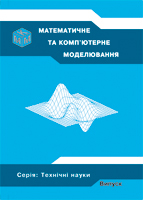Модифікований метод обчислення порядку еліптичних кривих
DOI:
https://doi.org/10.32626/2308-5916.2017-15.43-48Анотація
Наведений модифікований алгоритм обчислення порядку еліптичної кривої, визначеної над двійковим полем. Порівнюються теоретичні та експериментальні показники обчислювальної складності даного метода та його базової версії. Робляться висновки щодо можливості його використання для модифікації національних стандартів
Посилання
Gaudry P. A comparison and a combination of SST and AGM algorithms for counting points of elliptic curves in characteristic 2. ASIACRYPT 2002. 8th International Conference on the Theory and Application of Cryptology and Information Security Queenstown. New Zealand: Springer, 2002. P. 311–327.
Ганзя Р.С. Оцінка обчислювальної складності методів підрахунку кількості точок на еліптичній кривій. Харків: Системи обробки інформації. 2016. Вип. 8(145). С. 92–99.
Satoh T., Skjernaa B., Taguchi Y. Fast computation of canonical lifts of elliptic curves and its application to point counting [Text]. Finite Fields. 2003. Appl., 9(1). P. 89–101.
Frederik Vercauteren. Computing zeta functions of curves over finite fields: dissertation for the degree of PhD: 10.2003. Katholieke Universiteit Leuven, 2013. 195 p.
##submission.downloads##
Опубліковано
Номер
Розділ
Ліцензія
Authors who publish with this journal agree to the following terms:- Authors retain copyright and grant the journal right of first publication with the work simultaneously licensed under a Creative Commons Attribution License that allows others to share the work with an acknowledgement of the work's authorship and initial publication in this journal.
- Authors are able to enter into separate, additional contractual arrangements for the non-exclusive distribution of the journal's published version of the work (e.g., post it to an institutional repository or publish it in a book), with an acknowledgement of its initial publication in this journal.
- Authors are permitted and encouraged to post their work online (e.g., in institutional repositories or on their website) prior to and during the submission process, as it can lead to productive exchanges, as well as earlier and greater citation of published work (See The Effect of Open Access).

